
Eastern Body, Western Mind: Exploring Anodea Judith’s Book
Key Points:
- Anodea Judith integrates the Eastern chakra system with Western developmental psychology, somatic theory, and Jungian archetypes to create a comprehensive framework for understanding human development.
- The seven chakras represent distinct stages of physical, emotional, and psychological growth, each with its own developmental tasks and challenges.
- Unresolved traumas or unmet needs at any stage can lead to energetic blocks in the corresponding chakra, affecting an individual’s overall well-being and ability to master later developmental tasks.
- Judith aligns the chakra system with Erik Erikson’s psychosocial stages, showing how each chakra reflects key developmental crises and opportunities for growth.
- She also incorporates Margaret Mahler’s separation-individuation theory and Freud’s psychosexual stages to provide a more embodied, energetic understanding of early childhood development.
- Drawing on somatic psychology, particularly the work of Wilhelm Reich, Judith emphasizes how unresolved traumas are stored in the body as chronic muscular tensions, requiring body-based therapies for full release and integration.
- Each chakra is associated with specific archetypal energies and symbols that reflect universal patterns of human experience, connecting personal developmental journeys to the collective unconscious.
- Judith’s approach is grounded in yogic philosophy and the understanding of the subtle energy body, emphasizing the importance of integrating physical, emotional, mental, and spiritual dimensions of experience for true healing and wholeness.
- The goal of human development in Judith’s framework is not a static endpoint, but a lifelong journey of growth, healing, and self-discovery, leading to greater balance, vitality, and creative self-expression.
- By providing an integrative, holistic understanding of human development, Judith’s work offers a valuable roadmap for cultivating resilience, compassion, and awakened presence in a time of global transformation.
In her groundbreaking book Eastern Body, Western Mind, Anodea Judith presents a fascinating integration of Eastern and Western approaches to understanding human development, psychology, and somatic experience. Judith’s central thesis is that the chakra system, a model originating from ancient Indian yogic traditions, provides a comprehensive framework for mapping the interplay of physical, emotional, and psychological growth across the lifespan.
What sets Judith’s work apart is her skillful weaving together of this Eastern framework with key concepts and theories from Western psychology and somatic studies. By drawing on the insights of thinkers like Erik Erikson, Margaret Mahler, Sigmund Freud, and Wilhelm Reich, Judith creates a rich and nuanced model for understanding the complex journey of human development.
We will explore the key elements of Judith’s integrative approach, focusing on how she aligns the chakra system with Western developmental stages, incorporates principles of somatic psychology, and draws on Jungian archetypes and yogic philosophy to create a truly holistic vision of growth and healing.
The Chakra System as a Developmental Map
At the heart of Judith’s framework is the idea that the seven major chakras represent not just energy centers in the body, but distinct stages of development, each with its own physical, emotional, and psychological tasks and challenges. Let’s briefly overview how Judith maps the chakras onto the lifespan:
- Root Chakra (Muladhara): Corresponds to infancy (birth to 12 months), focusing on basic trust, safety, and survival needs.
- Sacral Chakra (Svadhisthana): Aligns with early childhood (6 to 24 months), centering on emotional bonds, sensory exploration, and pleasure.
- Solar Plexus Chakra (Manipura): Reflects the toddler years (18 to 36 months), involving the development of personal power, will, and autonomy.
- Heart Chakra (Anahata): Corresponds to early school age (4 to 7 years), emphasizing self-love, empathy, and emotional intelligence.
- Throat Chakra (Vishuddha): Aligns with the middle school years (7 to 12), focusing on self-expression, communication, and creativity.
- Third Eye Chakra (Ajna): Reflects the adolescent quest for identity, involving abstract thinking, self-reflection, and finding one’s place in the world.
- Crown Chakra (Sahasrara): Corresponds to adulthood and the ongoing journey of self-actualization, spiritual connection, and unity consciousness.
For Judith, the chakras represent a cumulative sequence, with each stage building on the foundation of the previous ones. Experiences of trauma, neglect, or overindulgence at any stage can result in “energy blocks” that impede the healthy unfolding of subsequent developmental tasks.
Here’s a helpful analogy to understand this cumulative effect: Imagine you’re building a house. The root chakra is like the foundation – if it’s not stable and secure, it will affect the integrity of the entire structure. The sacral chakra is like the pipes and wiring – if there are kinks or blockages, the whole system won’t flow properly. And so on, all the way up to the crown chakra, which is like the roof that connects the house to the sky and the world beyond.
So in Judith’s model, while we may have specific work to do at each stage, we’re also always working on integrating and balancing the energies of all the chakras. It’s a dynamic, lifelong process of growth and self-discovery.
Now that we have a basic understanding of how Judith uses the chakra system as a developmental map, let’s dive deeper into how she integrates this Eastern framework with some key Western theories of development.
How do the Chakras Conceptualize Somatic Emotion?
Alright, let’s take a deep dive into how Anodea Judith’s chakra system, as presented in her groundbreaking book Eastern Body, Western Mind, maps onto the human developmental journey. We’ll explore each chakra in depth, looking at the key developmental tasks, emotional challenges, and somatic patterns associated with the different stages of life.
First, a quick overview of what the chakras are and why they’re relevant to human development. In yogic philosophy, the chakras are seen as spinning wheels or vortices of energy located along the central channel of the body. There are said to be seven main chakras, each corresponding to a particular region of the body and associated with specific physical, emotional, and spiritual qualities.
What Judith does in her work is show how these ancient yogic insights align beautifully with modern Western psychology, particularly theories of developmental stages. She argues that each chakra represents a key milestone or challenge that we face as we grow and mature, and that our experiences during these critical periods can profoundly shape the way our energy moves (or gets stuck) in the associated chakra.
Let’s start at the beginning, with the Root Chakra, or Muladhara in Sanskrit. This chakra is located at the base of the spine and is associated with the color red. It relates to our most basic needs for safety, security, and belonging. Judith links this chakra to the first year of life, when our primary task is to establish a sense of trust in the world and in our caregivers.
If our early environment is stable, predictable, and nurturing, we develop a strong foundation in the root chakra. We feel grounded, resilient, and able to meet our basic needs. But if there’s neglect, abuse, or chronic instability in those early months, it can lead to an imbalance in the root chakra. We may carry a pervasive sense of fear, anxiousness, or mistrust. Somatically, this often shows up as issues with the legs, feet, rectum, or immune system – parts of the body associated with this chakra.
Moving up the body, we come to the Sacral Chakra or Svadhisthana, associated with the color orange. This chakra is all about emotional flow, sensuality, and creativity. It relates to the element of water and the idea of fluidity and adaptability. Judith correlates this chakra with the early childhood years, roughly 6 to 24 months, when we’re learning to express our emotions and desires more fully.
If we’re met with attunement and acceptance during this stage, able to explore our feelings and impulses without shame, the sacral chakra blossoms. We develop emotional intelligence, empathy, and a healthy relationship to pleasure. But if our emotional expression is shut down or met with inconsistency, it can result in blocks in the sacral chakra. We may struggle with intimacy, addictions, or creative stagnation. Physically, this often manifests as problems with the hips, lower back, reproductive organs, or bladder.
Next is the Solar Plexus Chakra or Manipura, glowing a radiant yellow in Judith’s system. This is the seat of our personal power, self-esteem, and autonomy. It’s about standing in our truth, setting healthy boundaries, and courageously going after what we want. Developmentally, Judith links this to the toddler years, 18 to 36 months, when we’re learning to assert our independence and explore our environment more boldly.
With supportive, encouraging caregivers who give us room to spread our wings, the solar plexus flourishes. We develop a strong sense of self, confidence, and the ability to take decisive action. But with overbearing or shaming parenting, this chakra can get undermined. We may struggle with low self-worth, passivity, or digestive troubles – common somatic manifestations of an imbalanced solar plexus.
Moving into the Heart Chakra or Anahata, we shift to the realm of compassion, self-acceptance, and unconditional love. Green in color, this chakra is all about the exchange of energy between self and other, the dance of giving and receiving care. Judith associates this chakra with early childhood, 4 to 7 years old, when our social-emotional world is rapidly expanding.
With a foundation of secure attachment and nurturing relationships, the heart chakra blossoms. We develop empathy, self-love, and the capacity for caring, reciprocal bonds. But with experiences of rejection, neglect, or betrayal during this sensitive period, the heart can armour up. We may carry feelings of unworthiness, fear of vulnerability, or patterns of self-sacrifice. Physically, an imbalanced heart chakra often shows up as shallow breathing, poor circulation, or tension in the chest.
Continuing our journey up the body, we arrive at the Throat Chakra or Vishuddha, vibrating at a sky blue frequency. This is the center of communication, self-expression, and authenticity. It’s about finding our voice, speaking our truth, and aligning our inner and outer worlds. Judith links this chakra to the adolescent years, when we’re figuring out who we are and how to articulate that to others.
With encouragement to express ourselves freely and a strong sense of self developed in the lower chakras, the throat opens up. We’re able to communicate clearly, listen deeply, and stand in our integrity. But with experiences of silencing, criticism, or mixed messaging growing up, blocks can form in the throat chakra. We may have trouble asserting ourselves, fall into people-pleasing patterns, or struggle with creative expression. Somatically, this can manifest as neck and shoulder tension, TMJ, thyroid issues, or chronic sore throats.
Moving into the more subtle realms, we come to the Third Eye Chakra or Ajna, shimmering with an indigo light. This is the seat of intuition, wisdom, and imagination. It’s about seeing clearly – both in terms of our inner vision and our ability to perceive the deeper patterns and meanings of life. Judith correlates this chakra with late adolescence and early adulthood, when we’re forming our worldview and exploring our identity at a deeper level.
With encouragement to trust our inner knowing and a supportive environment for self-reflection, the third eye opens. We’re able to access our intuition, think symbolically, and tap into wells of inner wisdom. But with rigid belief systems, invalidation of our perceptions, or a fear-based worldview, the third eye can become clouded. We may feel disconnected from our intuition, overly skeptical, or blocked in our ability to envision possibilities. Physically, imbalances here can show up as headaches, vision problems, nightmares, or excessive daydreaming.
Finally, we arrive at the Crown Chakra or Sahasrara, the thousand-petaled lotus at the top of the head. This is our connection to the divine, the transcendent, the greater mysteries of the universe. It’s about letting go of our limited ego identifications and resting in pure awareness. The crown is less directly associated with a particular developmental stage, as it represents more of a lifelong unfolding into higher states of consciousness.
With a strong foundation in the lower chakras and an openness to spirituality, the crown chakra awakens. We may have profound experiences of unity, bliss, or deep inner peace. We’re able to let go of attachments and rest in the present moment more easefully. But with blocks in the lower chakras, a closed-minded belief system, or unresolved trauma, the crown can feel disconnected. We may struggle with feelings of isolation, apathy, or a crisis of meaning. Physically, imbalances here can manifest as energetic depletion, dissociation, or a sense of being ungrounded.
What’s powerful about Judith’s model is that it gives us a way to map our embodied experience onto a spiritual framework. By understanding the chakras as a developmental progression, we can start to unpack how our early experiences, relationships, and environments have shaped the way we show up in the world – physically, emotionally, cognitively, and spiritually.
We can also start to see where we might be carrying unresolved traumas or limiting beliefs from earlier stages that are holding us back from fully embodying our potential. With this awareness, we can begin to alchemize and integrate these patterns, bringing more flow and vitality to all the chakras.
Of course, this isn’t a linear journey – we’re always cycling through the lessons of each chakra, spiraling back to retrieve and heal younger parts of ourselves as we grow. And every chakra contains the seed of the others, so it’s about learning to harmonize and balance the whole system.
But by bringing together yogic wisdom with Western psychology in this way, Judith offers us a powerful roadmap for self-discovery and transformation. The chakra system becomes not just an esoteric philosophy, but a practical tool for understanding our own unique journey of embodiment and awakening.
So next time you’re feeling stuck, overwhelmed, or disconnected, try tuning into the energy of your chakras. Notice where there might be areas of depletion or congestion, and explore what early experiences or beliefs might be contributing to those patterns. With compassionate awareness and a commitment to your own growth, you can begin to invite more flow, integration, and vitality into every layer of your being. The key is to trust the intelligence of your own energy body and let it guide you back home to wholeness.
Integration with Western Developmental Theories
One of the great strengths of Judith’s approach is the way she weaves the chakra system together with prominent developmental theories from Western psychology. This integration provides a more complex and multidimensional understanding of the path of human growth. Let’s explore a few key examples.
Erik Erikson’s Psychosocial Stages Judith draws extensively on Erik Erikson’s eight-stage model of psychosocial development, showing how each of Erikson’s stages aligns with the developmental tasks associated with a particular chakra.
For instance, Erikson’s first stage of “Trust vs. Mistrust” corresponds to the root chakra, as both emphasize the infant’s need for a secure, nurturing environment to establish a basic sense of safety and trust in the world. If these needs aren’t adequately met, the result may be an imbalance in the root chakra, manifesting as chronic anxiety, fear, or a sense of disconnection from one’s body and the earth.
Similarly, Erikson’s stage of “Autonomy vs. Shame and Doubt” aligns with the developmental tasks of the sacral chakra, as toddlers work to establish a sense of independence while still maintaining close emotional bonds. Traumas or misattunements at this stage can lead to sacral chakra blockages, which may manifest as struggles around boundaries, control, or emotional regulation.
By mapping Erikson’s stages onto the chakra system in this way, Judith highlights the interdependence of psychosocial and energetic development. She helps us see how unresolved conflicts at any stage can lead to corresponding chakra imbalances, with ripple effects that shape an individual’s sense of self, relationships, and engagement with the world.
Margaret Mahler’s Separation-Individuation Theory
Judith also incorporates key concepts from Margaret Mahler’s theory of separation-individuation, which focuses on the critical developmental milestones of early childhood.
Mahler’s stages of “normal autism,” “symbiosis,” “differentiation,” and “rapprochement” closely parallel the unfolding of the first three chakras. The root chakra reflects the infant’s complete dependence on the mother for survival and emotional regulation, much like Mahler’s “symbiotic” phase. The sacral chakra aligns with the process of “differentiation,” as the child begins to explore the world and develop a sense of separateness. And the solar plexus chakra mirrors the “rapprochement” subphase, as the child navigates the conflicts between their growing autonomy and their ongoing need for connection and support.
Judith emphasizes how disruptions in this separation-individuation process, whether through inadequate bonding, premature separation, or inconsistent caregiving, can contribute to imbalances in the lower chakras. These imbalances may manifest as difficulties with self-regulation, boundary setting, or asserting one’s needs and desires in relationships.
Sigmund Freud’s Psychosexual Stages
While acknowledging the limitations and controversies of some of his ideas, Judith also draws connections between the chakra system and Freud’s psychosexual stages of development.
She notes how Freud’s oral, anal, and phallic stages roughly correspond to the first three chakras, highlighting the close links between physical, libidinal, and ego development. Fixations or traumas at any of these stages can contribute to corresponding chakra blockages, shaping an individual’s attitudes towards pleasure, control, and power.
For instance, if a child’s natural striving for autonomy is harshly punished during the “anal stage,” they may develop an overactive solar plexus chakra, becoming overly controlling or domineering in their relationships. Conversely, if their will is consistently overpowered, they may have a deficient solar plexus, struggling with low self-esteem, passivity, and difficulty setting boundaries.
By integrating Freud’s theory with the chakra model in this way, Judith provides a more embodied, energetic understanding of early psychosexual development and its lifelong impact.
The Influence of Somatic Psychology
In addition to her integration of developmental theories, one of the most innovative aspects of Judith’s approach is her incorporation of principles from somatic psychology and body-centered therapies.
Drawing especially on the work of Wilhelm Reich, Judith emphasizes how unresolved traumas and conflicts are not just stored in the mind, but held in the body itself as chronic muscular tensions or “armoring.” Each chakra is associated with specific regions and functions of the body, and blockages in a particular chakra will often manifest on the physical level as illness, pain, or restriction.
For instance, someone with an imbalanced root chakra may experience issues like sciatica, knee problems, or digestive issues – all reflecting a sense of “ungroundedness” or disconnection from the earth and the support of the body. An overactive throat chakra might manifest as TMJ, chronic sore throats, or thyroid problems, mirroring conflicts around self-expression and speaking one’s truth.
Judith argues that true healing requires working with these somatic expressions of imbalance, not just mental or emotional symptoms. Practices like yoga, bioenergetics, and breathwork can help release chronic tensions, regulate the nervous system, and restore the natural flow of energy through the chakras.
This emphasis on the body also reflects Judith’s understanding of trauma and its impact on the autonomic nervous system. She explains how overwhelming experiences can lead to a dysregulated nervous system, oscillating between states of hyperarousal (fight-or-flight) and hypoarousal (freeze or collapse).
By working somatically to release stored survival stress and promote embodied self-awareness, Judith believes we can help the nervous system return to a state of greater balance and resilience. As we learn to listen to the wisdom of the body and respond to its needs with care and attunement, we create a stronger foundation for psychological and energetic healing.
Archetypes, Mythology, and the Collective Unconscious
Judith further enriches her developmental model by drawing on Jung’s concepts of archetypes and the collective unconscious. She explores how each chakra is associated with particular archetypal energies, symbols, and myths that reflect universal patterns of human experience.
For example, the root chakra connects to archetypes of the Great Mother, representing qualities of nurturance, abundance, and fertility. The sacral chakra is linked to archetypes of the Lover and the Creative Child, reflecting the energies of passion, play, and sensual aliveness. The solar plexus resonates with the archetypes of the Warrior and the Leader, embodying our drive for power, autonomy, and self-mastery.
By tracing these mythic themes across cultures, Judith reveals how the chakras don’t just reflect personal developmental dramas, but tap into the shared energies and wisdom of the collective unconscious. Connecting with these archetypal forces – whether through dreamwork, art, ritual, or active imagination – can be a powerful resource for growth and transformation.
At the same time, Judith cautions against the dangers of archetypal possession or inflation. If we identify too rigidly with a particular archetype, we may neglect the development and integration of other essential energies. The goal is not to embody the “pure” essence of any one chakra, but to cultivate a dynamic balance and wholeness that honors all the colors of the rainbow bridge.
Yogic Philosophy and the Subtle Body
Finally, Judith’s work is deeply grounded in the wisdom traditions of yoga and Tantra, which offer a rich understanding of the subtle energetic anatomy of the human system. In these traditions, the chakras are part of a complex network of nadis (energy channels) and vayus (winds or vital airs) that regulate the flow of prana (life force) through the body-mind.
Judith draws on yogic concepts like the koshas or sheaths of the self to explore the multi-dimensional nature of human experience. Beyond just the physical body (annamaya kosha), we have energetic (pranamaya), mental/emotional (manomaya), intuitive (vijnanamaya), and blissful (anandamaya) layers of being, each of which need to be addressed and integrated for true healing to occur.
This holistic view is reflected in Judith’s emphasis on the importance of spiritual practice alongside psychological and somatic work. Techniques like meditation, chanting, and self-inquiry can help us access the transpersonal dimensions of the upper chakras, cultivating states of inner peace, clarity, and unity consciousness.
At the same time, Judith is clear that spirituality is not a bypass or escape from the developmental work of the lower chakras. We can’t simply transcend our early wounds or traumas; we have to go through them, slowly and mindfully unwinding the knots of our conditioning until we can abide more fully in the spaciousness of our true nature.
In this sense, the goal of human development for Judith is not some static endpoint or ideal of perfection, but a lifelong journey of growth, healing, and self-discovery. As we work to integrate the energies of all the chakras, we gradually embody more of our innate wholeness, wisdom, and capacity for love and creative self-expression.
Integrating all Perspectives
Anodea Judith’s Eastern Body, Western Mind offers a profound and pioneering synthesis of Eastern and Western approaches to human development. By mapping the chakra system onto Western developmental theories, somatic psychology, and archetypal symbolism, Judith creates a powerful framework for understanding the complex, multi-dimensional journey of growth.
At the heart of this framework is the idea that the chakras represent not just energy centers, but distinct stages of physical, emotional, and psychological unfolding. Each chakra has its own developmental tasks and challenges, and our ability to master these tasks depends on the quality of care and attunement we receive at each stage.
Traumas, neglect, or misattunements at any stage can lead to “energy blocks” that impede the healthy unfolding of the self. These blocks are held not just in the mind, but in the very tissues of the body, reflecting the deep interconnection of soma and psyche.
Judith’s approach to healing these blocks is integrative and multi-modal, drawing on both ancient wisdom traditions and contemporary innovations in psychology and somatic therapies. Through a combination of talk therapy, bodywork, breathwork, and spiritual practice, she believes we can gradually release the armoring of the past and reconnect with the essential vibrancy and flow of our life energy.
What emerges from this transformative work is a more integrated, embodied sense of self – one that honors the wisdom of the body, mind, and spirit, and sees our personal journey as part of the larger unfolding of human potential. As we learn to balance and harmonize the energies of the chakras, we become more capable of meeting life’s challenges with resilience, creativity, and compassionate presence.
Ultimately, Judith’s vision is one of wholeness and integration – not just within the individual, but in our relationships, communities, and the larger web of life. By understanding our own journey through the lens of the chakras, we gain a deeper appreciation for the universal struggles and triumphs of the human experience. And by working to heal our own wounds and imbalances, we contribute to the healing of the world around us.
In a time of global crisis and transformation, this integrative, holistic understanding of human development feels more essential than ever. As we navigate the challenges of our rapidly changing world, Judith’s work offers a roadmap for growth and resilience – one that honors the complexity of our being and the innate wisdom of the body-mind.
With its brilliant synthesis of Eastern and Western wisdom, somatic and spiritual practice, and personal and transpersonal development, Eastern Body, Western Mind is a true landmark in the fields of psychology and human potential. It invites us to embrace the fullness of our humanity – to celebrate our embodied, embedded, and enchanted nature, and to recognize our deep interconnection with all of life. As we heed this invitation and embark on the journey of self-discovery, we open to the possibility of a more awakened, compassionate, and creative way of being – one that can heal ourselves and our world from the inside out.
The Colors of Transformation: Integrating ETT and the Chakra System
Anodea Judith’s pioneering work in Eastern Body, Western Mind maps the chakra system onto stages of human development, with each energy center corresponding to key physical, emotional, and psychological milestones. In a fascinating parallel, the therapeutic application of color in Dr. Steven Vazquez’s Emotional Transformation Therapy (ETT) appears to engage and process the core developmental themes associated with each chakra. By examining the connections between these systems through the lens of clinical research, we gain a scientifically-grounded perspective on color’s role in healing.
Root Chakra (Muladhara) and Far-Red Light
Judith associates the root chakra with early infancy, where the primary task is establishing a sense of safety, trust, and groundedness in the physical world. Traumas at this stage can manifest as chronic anxiety, dissociation, or difficulty with embodiment – themes that resonate with the effects of far-red light in ETT.
Dr. Vazquez’s research suggests that far-red light stimulates the insula and promotes interoceptive awareness, helping to reconnect individuals with their bodily sensations and restore a sense of presence. Far-red may also modulate activity in the brainstem and vagus nerve, regulating autonomic arousal and facilitating a felt sense of safety.
Sacral Chakra (Svadhisthana) and Red-Orange Light
The sacral chakra, per Judith, develops during the early childhood years and governs emotional bonding, sensory exploration, and the formation of a distinct sense of self. Disruptions at this stage can lead to patterns of codependency, fear of abandonment, or difficulty with intimate connection – issues that red-orange light in ETT empirically elicits and resolves.
Studies by Dr. Vazquez demonstrate that red-orange wavelengths can rapidly alleviate emotional distress and promote differentiation of self and other, possibly by stimulating the anterior cingulate cortex and modulating limbic activation. This supports individuation while maintaining the capacity for healthy attachment.
Solar Plexus Chakra (Manipura) and Yellow Light
Judith links the solar plexus chakra to the developmental tasks of establishing personal power, setting boundaries, and navigating the dynamics of will and control. Imbalances here may manifest as low self-esteem, difficulties with decision-making, or a sense of powerlessness – themes yellow light in ETT precisely targets.
Dr. Vazquez’s research on “The New Process Color Theory” grounds ETT’s use of yellow in an understanding of how specific wavelengths interact with key brain regions to help individuals reclaim their sense of agency and transform victim consciousness. Yellow light may stimulate the hippocampus and enhance memory reconsolidation, allowing for rapid revision of disempowering beliefs.
Heart Chakra (Anahata) and Green Light
The heart chakra, in Judith’s system, underpins experiences of love, empathy, and self-acceptance. Traumas to this center can manifest as a closed heart, a fear of vulnerability, or challenges with giving and receiving nurturing care – wounds that green light in ETT appears to soothe and mend.
Research by Dr. Vazquez and colleagues suggests that green wavelengths promote relaxation, emotional balance, and prosocial behavior by modulating the parasympathetic nervous system and boosting oxytocin, the bonding hormone. Green light may also stimulate the release of endogenous opioids, inducing a sense of wellbeing and connection.
Throat Chakra (Vishuddha) and Blue Light
Judith associates the throat chakra with authentic self-expression, clear communication, and speaking one’s truth. Blocks in this chakra can lead to patterns of silence, people-pleasing, or a fear of visibility – issues blue light in ETT directly addresses.
Dr. Vazquez’s studies indicate that blue wavelengths can enhance verbal fluency and support the release of unexpressed emotions by stimulating Broca’s area and other key language networks in the brain. Blue light may also modulate mirror neuron activity, promoting empathy and attunement in communication.
Third Eye Chakra (Ajna) and Indigo Light
The third eye chakra, per Judith, governs insight, intuition, and access to higher wisdom. Imbalances here can manifest as confusion, disconnection from inner guidance, or difficulty with visualization and imagination – challenges indigo light in ETT may help overcome.
Research by Dr. Vazquez and colleagues suggests that indigo wavelengths stimulate the pineal gland and regulate circadian rhythms, enhancing cognitive clarity and creative problem-solving. Indigo light may also induce synchronized gamma brainwaves in the frontal lobes, which are associated with states of peak performance and flow.
Crown Chakra (Sahasrara) and Violet Light
Judith links the crown chakra to experiences of unity consciousness, transcendence, and spiritual connection. Disruptions at this level can evoke feelings of isolation, emptiness, or a lack of higher purpose – themes violet light in ETT engages through its effects on the brain.
Dr. Vazquez’s groundbreaking research on biofield therapy suggests that violet wavelengths may stimulate the release of DMT, the “spirit molecule,” from the pineal gland, inducing mystical states and a sense of boundlessness. Violet light could also modulate activity in the default mode network, which is implicated in self-transcendence and ego dissolution.
Does Eastern Body Western Mind Help Explain Emotional Transformation Therapy?
To deeply understand how color and light could impact emotional development in the ways that ETT and Judith’s chakra system describe, it’s essential to examine the visual pathways in the brain and body. While some specific claims in ETT still need further research, there are compelling scientific reasons to believe the visual system plays a key role in regulating our physiology, psychology, and even spiritual experiences.
Let’s start with the basics of how we perceive light and color. When light enters the eye, it activates specialized cells in the retina called photoreceptors. There are two main types: rods, which handle low light and give us night and peripheral vision, and cones, which need brighter light but allow us to see color. We have three kinds of cones, each sensitive to different light wavelengths – short (blue), medium (green), and long (red).
The cones and rods send their signals to retinal ganglion cells, which then relay information via the optic nerve to the brain for further processing. Interestingly, scientists have discovered a small subset (1-2%) of retinal ganglion cells that contain a light-sensitive pigment called melanopsin. These special cells, known as intrinsically photosensitive retinal ganglion cells (ipRGCs), can respond to light directly, even without input from rods and cones!
Here’s where it gets really fascinating: ipRGCs are critically involved in non-visual responses to light. They project to brain areas that regulate circadian rhythms, sleep-wake cycles, hormone release, and even mood and cognition. Major targets include:
- The suprachiasmatic nucleus (SCN) of the hypothalamus, the master clock that controls our daily rhythms
- The olivary pretectal nucleus, which mediates the pupillary light reflex (how your pupils constrict in bright light)
- The habenula, involved in processing reward, pain, and regulating emotion
- The limbic system – the seat of emotion, learning, and memory. Key limbic structures include:
- Amygdala: Handles emotional reactions, especially fear and threat-related responses
- Hippocampus: Critical for forming new memories and spatial navigation
- Anterior cingulate cortex: Involved in emotional self-control and regulating autonomic functions
So through these non-image-forming pathways, light exerts profound effects on the brain and body, often below our conscious awareness. For example, studies show blue light exposure, which strongly triggers melanopsin, enhances alertness, quickens reaction times, and boosts cognitive performance, while suppressing sleep-inducing melatonin. In contrast, red light reduces stress, increases melatonin, and promotes relaxation.
This provides a potential biological basis for some of ETT’s claims about how different colors impact emotion and cognition. The activating effects of blue light, which ETT links to the throat chakra and enhanced communication, could relate to its stimulating influence on the brain via ipRGCs. Similarly, the soothing effects of red light, associated with the root chakra in ETT, may arise from its modulation of the nervous system’s “rest and digest” functions.
Moreover, the direct projections from ipRGCs to limbic regions like the amygdala and hippocampus hint that light could modulate emotion and memory at a deep level. This aligns with ETT’s premise that specific wavelengths can rapidly transform emotional imprints and resolve past traumas held in the body’s tissues.
Beyond these non-visual pathways, research suggests color vision itself plays an important role in emotional experience. Colors consistently evoke certain moods and physiological responses across people and cultures. Red is commonly associated with excitement, passion, and danger; blue with calm, openness, and competence, and so on.
These color-emotion links likely reflect a combination of innate biological tendencies and learned cultural associations. Some theorists propose evolutionary reasons for color preferences – e.g., positive responses to green may relate to the presence of nourishing vegetation, while wariness of red could stem from associations with blood, fire, and threats.
Yet colors also gain personal meanings through our life experiences and cultural contexts. The emotional significance of a color can vary between individuals and situations, reflecting our unique histories.
This notion that colors hold embodied, emotional meanings is central to ETT and Judith’s chakra system. In Judith’s model, each chakra is linked to a color expressing its developmental themes and energetic qualities. The fiery red of the root chakra conveys our primal needs for survival and grounding; the luminous violet of the crown chakra our drive for spiritual connection and transcendence.
Likewise, in ETT, different color wavelengths are thought to resonate with core emotions, beliefs, and somatic patterns held in neural networks. By applying precise colors, ETT aims to bring these implicit meanings into awareness for release and integration.
While the exact mechanisms are still being uncovered, here are some ways color and light may create these emotional-energetic shifts:
- Directly stimulating emotion-related brain areas like the amygdala, hippocampus, and prefrontal cortex
- Modulating neurotransmitters that affect mood, arousal, and motivation, such as serotonin and dopamine
- Entraining brainwaves to synchronize neural activity, which in turn may promote heightened awareness, emotional integration, and spiritual experiences
- Inducing physiological changes like heart rate, muscle tension, and skin conductance, which influence our felt sense of embodiment and emotion
- Tapping into personal and collective webs of meaning around colors, activating specific memories, archetypes, and symbols that then guide processes of emotional transformation
In summary, color and light have fascinating potential as therapeutic tools that bridge physiology, psychology, and the spiritual. As we’ve seen, the visual system is deeply interwoven with neural networks for regulation, emotion, cognition, and arousal. By working intelligently with these pathways, we may be able to consciously harness the power of light to help integrate body, mind, and spirit.
Ancient wisdom traditions like the chakra system intuited these links between color, consciousness, and well-being. Now, modern science is starting to fill in the details of how these connections work at a biological level. Approaches like ETT are pioneering ways to translate these insights into clinical practice.
Much still remains to be discovered. The specific claims of ETT and other color-based therapies need rigorous research to establish their efficacy. Yet as our scientific understanding of the visual system’s wide-ranging effects continues to grow, so too will our ability to work with light and color for healing and transformation.
Ultimately, the most powerful approach may be one that honors both the latest research and the time-tested wisdom of traditions like yoga and Ayurveda – one that seeks to support the full spectrum of human health and potential. As we explore these exciting frontiers in the science of color and consciousness, we may discover that the true healing power lies in the dynamic interplay of biology and spirit, physiology and meaning, the measurable and the immeasurable.
To work on tthese issues and more in Alabama schedule teletherapy with Pamela Hayes, Kristan Baer, or Haley Beech at Taproot Therapy.
Bibliography:
Judith, A. (2004). Eastern Body, Western Mind: Psychology and the Chakra System as a Path to the Self. Celestial Arts.
Erikson, E. H. (1993). Childhood and Society. W. W. Norton & Company.
Mahler, M. S., Pine, F., & Bergman, A. (2000). The Psychological Birth of the Human Infant: Symbiosis and Individuation. Basic Books.
Freud, S. (2010). Three Essays on the Theory of Sexuality. Martino Fine Books.
Reich, W. (1980). Character Analysis. Farrar, Straus and Giroux.
Jung, C. G. (1981). The Archetypes and the Collective Unconscious. Princeton University Press.
Feuerstein, G. (2013). The Psychology of Yoga: Integrating Eastern and Western Approaches for Understanding the Mind. Shambhala.

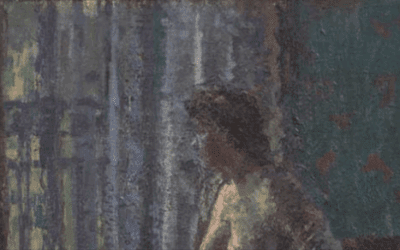





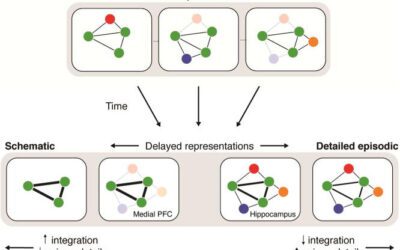
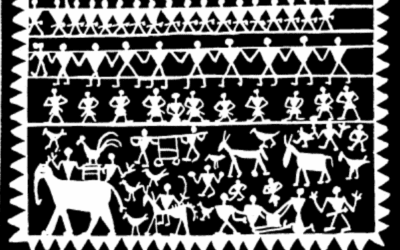
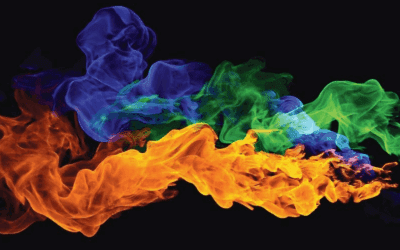



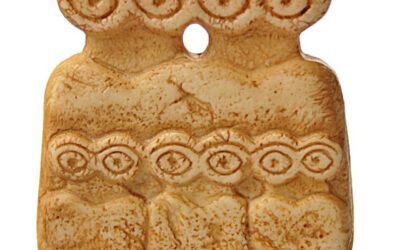

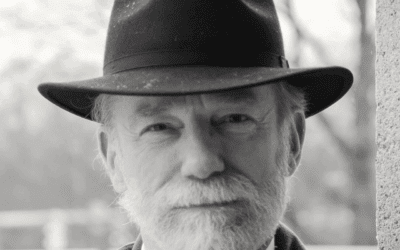
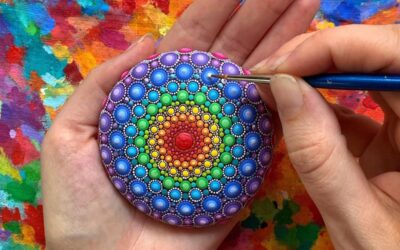







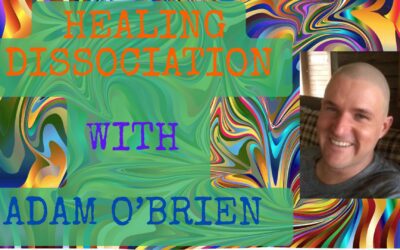
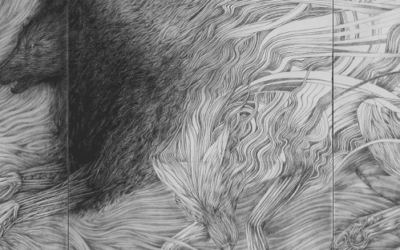
0 Comments